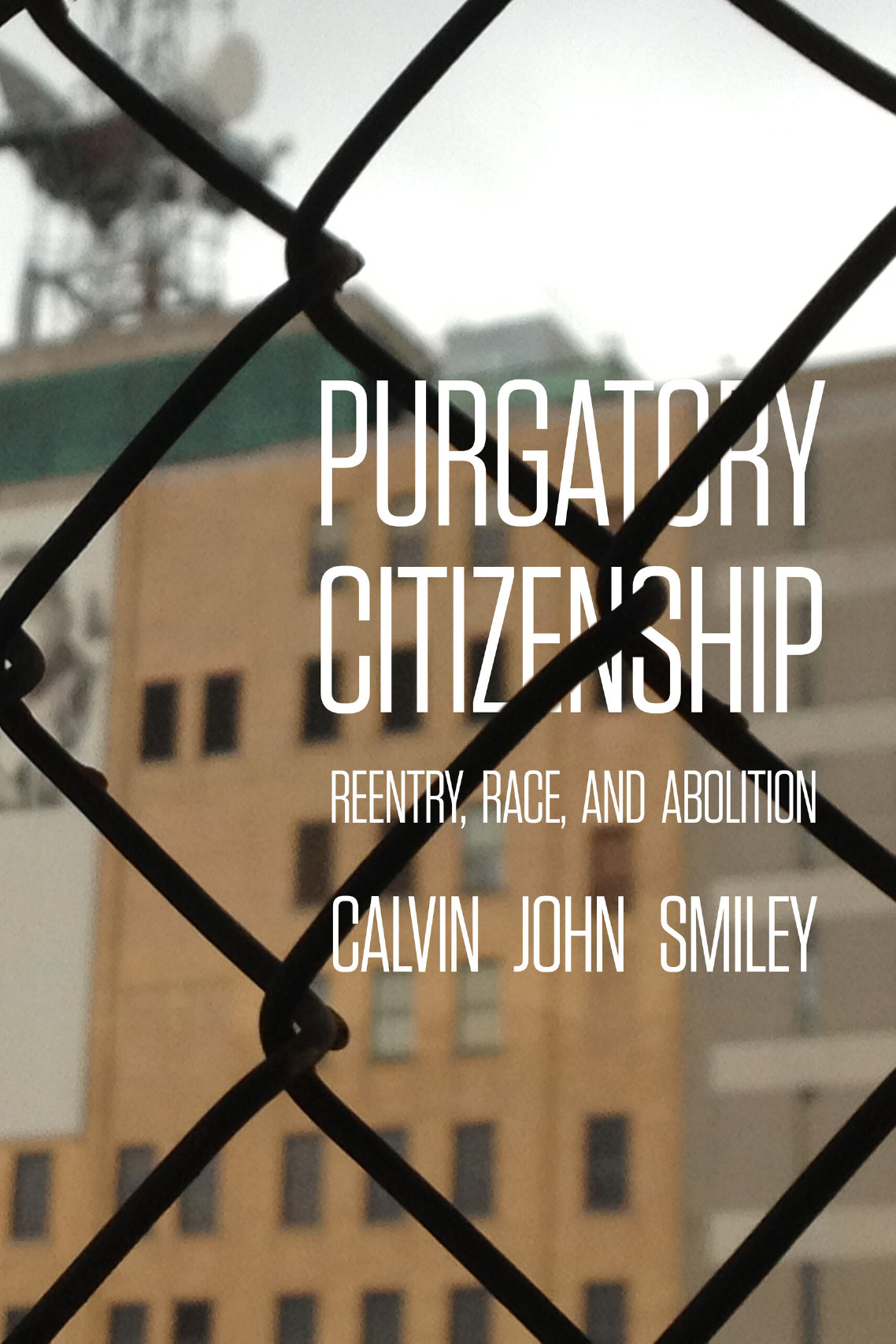Melvin was the first person I met at the community-based reentry center in downtown Newark, New Jersey. At the time, he was fifty-one years old, stood six feet tall, and had milk chocolate brown skin, a clean-shaven head, a prominent scar over his left eye, several chipped teeth, and a thin chinstrap beard peppered with gray hairs. Further, he maintained a well-built physique from a daily routine of push-ups, sit-ups, and pull-ups. Across both forearms he had several “homemade” tattoos, including a brick wall and his name, “Mel,” written vertically. He frequently wore a blue T-shirt with purple lettering that read, “Made in Newark,” signifying pride in his city. Yet it was the same city that had determined that more than half of his life would be spent within the New Jersey prison system. In fact, at the time we met, in November 2010, Melvin had been imprisoned for nearly thirty-five years—longer than I had been alive.
On an overcast autumn morning in 2010, Melvin, who had been incarcerated since the early 1980s, was stepping into a world that had profoundly changed around him and, in many ways, left him behind. Technological advances such as cellphones, the Internet, and social media were all things he could not fathom and was experiencing for the first time. Everyday items that many of us take for granted were unrecognizable.
During one of our first conversations, Melvin reached into his pocket and pulled out a worn brown leather wallet. “I don’t know why I have this,” he said. Naively, I began to explain the purpose of a wallet, a response that was received with a smirk and a brief laugh. “What I mean,” he said, “is I don’t know why I have this. I don’t have money, credit cards, or family pictures. It just takes up space in my pocket.” We both sat in silence for a few minutes as I reflected on his statement and its profound meaning. I broke the silence by asking if he would share more of his story.
By this time, Melvin had served a total of thirty-five years in prison. Part of the terms of his conditional release was that he remain on parole forever. In other words, any sort of violation would send him back to prison, as his parole does not end until December 31, 2999.
When he embarked on reentry—the transition from imprisonment to community—Melvin had never had a driver’s license, opened a bank account, or rented an apartment. He lacked a high school diploma and had never worked in the formal economy. Additionally, he had limited social networks, as many extended family members had died or fallen out of touch with him. He expressed an interest in politics with the election of Barack Obama. Yet he understood that his current condition would prevent him from being able to vote for the rest of his life, as many formerly incarcerated individuals are not allowed to vote in the United States.
In many ways, Melvin’s reentry is not a story of second chances but one of initial opportunities. As someone born into a postindustrial society, in a racially segregated, low-income community, who had come of age during the rise of mass incarceration, Melvin faced the daunting task known as reentry, which includes diminished legal rights and amplified social stigmas. For him, and for countless others in similar situations, the reentry process was not linear or clearly outlined but a much more complex and imprecise journey in which individuals must actively participate in doing reentry. I argue that reentry is an extension of, not a termination of, the carceral continuum, which exacerbates surveillance, punishment, and restrictions, creating a purgatory citizenship that places individuals in a precarious state of limbo somewhere between confinement and freedom.
In the 1980 film Stir Crazy, a comedy starring Richard Pryor and Gene Wilder, a pair of city slickers are charged with bank robbery in the rural United States and sentenced to 125 years in prison for a crime they did not commit. At one point Gene Wilder’s character discusses the inhumanity of prison conditions, saying, “I think more Americans should spend a little time behind bars to understand that.” His lawyer eerily and prophetically replies, “Well, more Americans probably will.”
Since that time, exponential prison growth has expanded the U.S. carceral system, peaking in the late 2000s with over 2.4 million people in jails or prisons. Additionally, more than 7.3 million people are under some sort of criminal legal supervision. Black Americans are disproportionately overrepresented in carceral and surveillance terrain. Remarkably, in 2010, the Bureau of Justice Statistics reported that, for the first time since the agency began collecting jurisdictional data in 1977, prison releases exceeded prison admissions in the United States. This marked a new era within U.S. punishment and incarceration, which piqued interest in what is more commonly referred to as reentry—the transition out of incarceration.
Today, more than 600,000 individuals exit prison institutions annually. Unfortunately, the cycle of incarceration remains extraordinarily high, as more than 60 percent of the people released are rearrested within three years and about 40 percent go back to jail or prison during that time. These numbers underscore the abysmal inability of public policy to create social safety nets for communities as well as the failure of incarceration as a deterrence or rehabilitation.
More from our decarceral brainstorm
Every week, Inquest aims to bring you insights from people thinking through and working for a world without mass incarceration.
Sign up for our newsletter for the latest.
Newsletter
Yet the story of reentry is not necessarily new but uniquely part of the Black American experience, tracing its lineage back to U.S. slavery, which in turn was replaced by a racist criminal legal system of captivity. Therefore, Black Americans have been in constant flux, moving between spaces of confinement and freedom, with liberties and rights simultaneously given and stripped away, making upward mobility a challenging, if not near impossible, endeavor.
Furthermore, reentry narratives are found in Black history and cultural expression. Malcolm X is one of the most notable examples of reentry: Before becoming a leading spokesperson advocating human rights, he had been incarcerated as a younger man. Moreover, reentry has been showcased in Black theater, film, television, and music. August Wilson’s 1984 play Joe Turner’s Come and Gone tells the story of Herald Loomis, a Black man, who was forced to work for a White man, Joe Turner, for seven years in the early 1910s, separating him from his wife and daughter, illustrating how the convict leasing system was used to effectively re-enslave Black folks after emancipation. The 2001 film Prison Song deals with various themes of race and the criminal legal system, notably highlighting draconian criminal justice policies such as the “three strikes” law, which sends the protagonist’s stepfather back to prison for life. In television, the comedy series The Last OG, which premiered in 2018, illustrates change and gentrification when the protagonist does not recognize his Brooklyn neighborhood after serving fifteen years in prison. J. Cole’s song “4 Your Eyez Only,” released in 2016, elucidates legal barriers of reentry, such as limited employment opportunities, underscoring many of the current issues within the reentry process.
Utilizing the concept of critical reentry studies, my book Purgatory Citizenship: Reentry, Race, and Abolition makes a concerted effort to elevate the voices and experiences, particularly those from racial minority groups and low-income communities, of individuals going through the reentry process, which is part of the criminal legal system, comprised of various local, state, and federal agencies that include law enforcement, courts, and corrections, creating a complex system of entangled and inconsistent policies. Critical reentry studies look to the genesis of the sociopolitical problems that need to be addressed to uproot systems of inequality and replace them with modalities of care to reduce harm.
Beyond this, critical reentry studies challenges standard practices and thinking surrounding current rubrics and approaches to reentry, which often end with advocating for reform. While certain reforms are needed immediately—better access to communication for incarcerated individuals and their families, and improved food in prison systems—long-term efforts toward abolition are required. Simply put, reform too often reinvents the carceral apparatus, which perpetuates inequality, exploitation, and injustice for already marginalized communities plagued with over-policing, harsher sentencing, and diminished resources. Therefore, advocates of critical reentry studies challenge scholars, policymakers, activists, and other stakeholders to reimagine and rethink assumptions surrounding punishment, particularly post-imprisonment, and the perpetual sanctions placed on individuals and communities. Critical reentry studies looks to the genesis of the sociopolitical problems that need to be addressed to uproot systems of inequality and replace them with modalities of care to reduce harm.
Ultimately, Purgatory Citizenship differs from others examining reentry because it addresses abolition—the concept of formally ending systems, practices, and institutions of punishment and surveillance, such as jails and prisons—particularly through the lived experiences of those returning to society. Notions of abolition are discussed from the perspective of those returning to society in their early days of reentry. In the end, Purgatory Citizenship is invested in putting reentry out of business, advocating for alternative practices that no longer rely on prisons and invasive surveillance, both in and out of institutions, but rather advocate for investment in community to avoid the need to “reenter” society at all.
Excerpted from Purgatory Citizenship: Reentry, Race, and Abolition by Calvin John Smiley, published by the University of California Press. © 2023 by Calvin John Smiley
Image: Ross Elder/Unsplash


